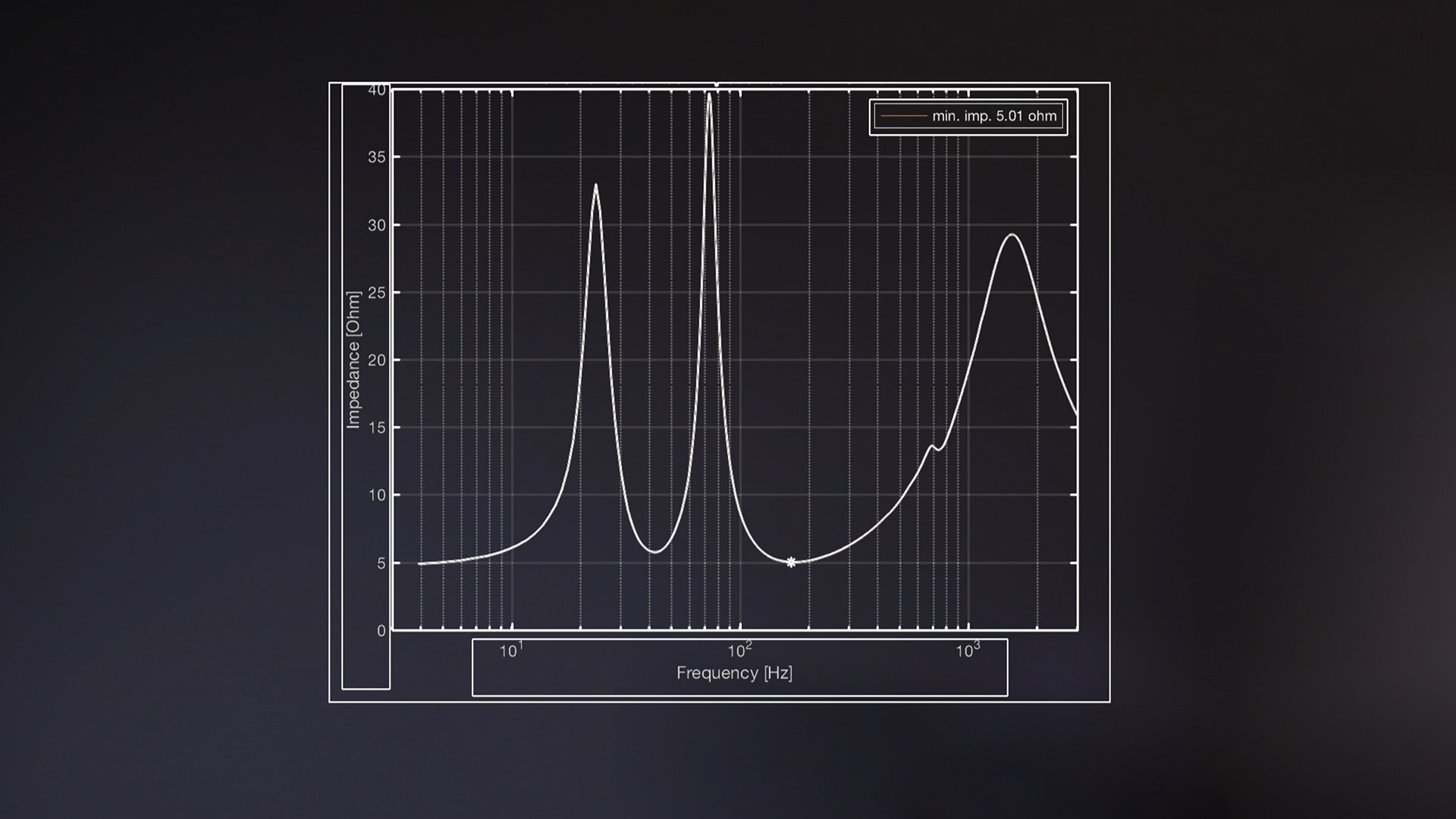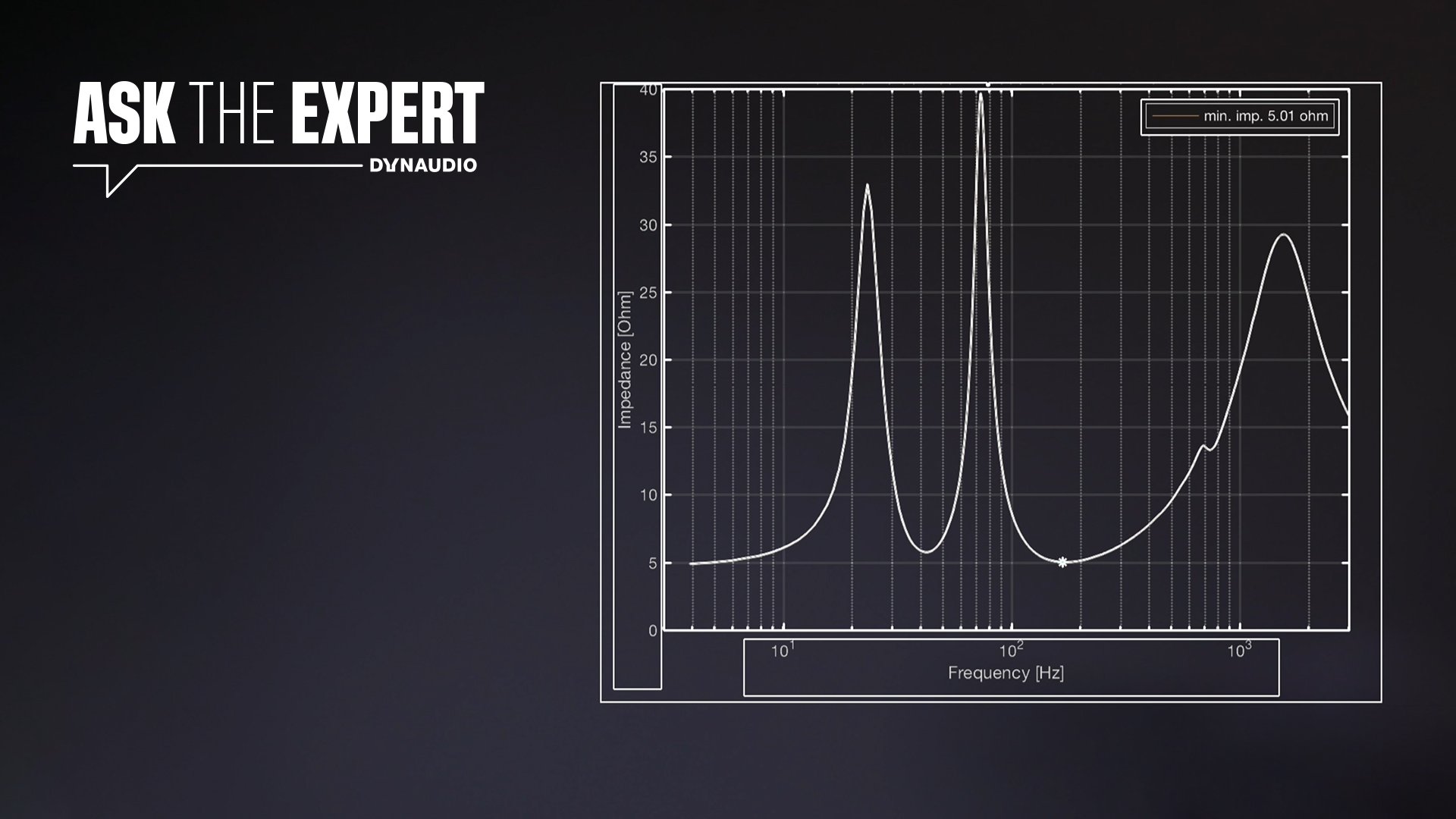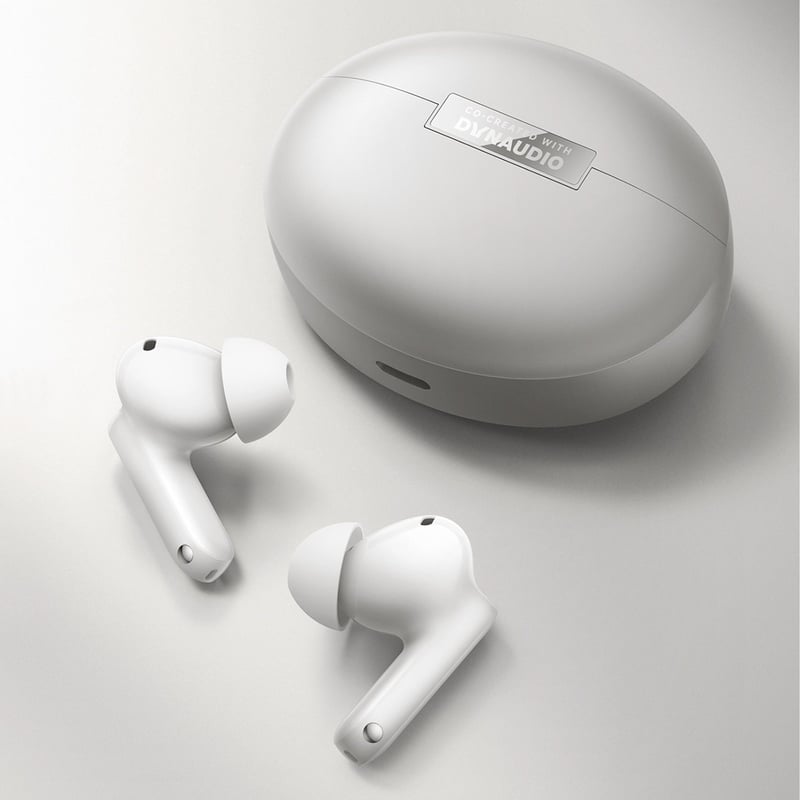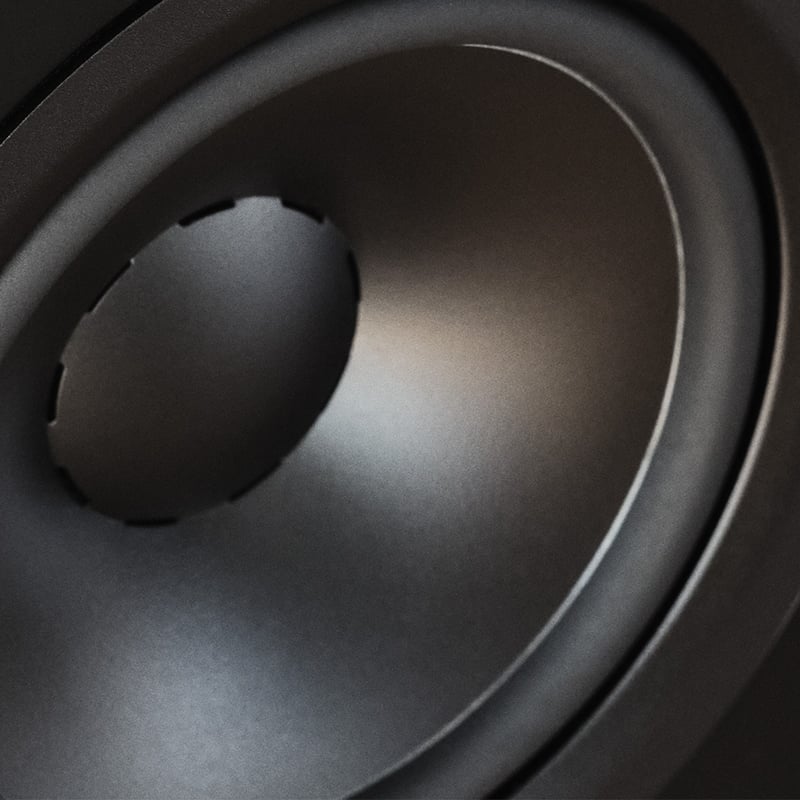In this episode of Ask The Expert we're looking at impedance is all its multi-faceted glory.
Keep on sending in those questions and we'll keep answering them on Dynaudio Ask The Expert. Simply fill out the 'Send us your questions' form at the bottom of this page, and we'll add them to the list!
What is impedance? Do I need to worry about it?
We often get the question asking why our speakers are 4 ohm impedance? And to answer that, we need to start out by explaining what impedance is. The short story on impedance is: as an end user with typical loudspeakers and modern amplifiers you actually don't need to worry about it.
You can think of impedance as the resistance of the electron flow. When we're trying to drive the loudspeaker, we're driving an electric current into the speaker. The impedance of the speaker results in how much current we're actually driving through the amplifier. More impedance – more resistance – means that less current is being drawn through the amplifier, and the loudspeaker won't play as loud.
Low impedance; low resistance. Now you're playing louder – but on the other hand, you're getting closer to a short-circuit of the amplifier, so you don't want the impedance to be too low. That sounds dangerous, but it really isn't in normal loudspeakers. That's why we design loudspeakers the way we do.
First of all, you need to understand that impedance varies with frequency. Whenever you see a specification sheet, you always see one number. But the actual impedance varies with frequency: if you look at a curve of impedance, you'll see the impedance go up and down, depending on the frequency. That's important.
The reason this is important is that the load on the amplifier – how hard we're driving it – depends on the minimum impedance. Some people think it depends on the average impedance, but it's actually the minimum impedance.
And just to get really nerdy about this, we're going to quote the actual standards. How do we specify what the minimum impedance is? There's a standard called IEC 60268-5, which says "The lowest value of the modulus of the impedance in the rated frequency range shall be no less than 80 per cent of the rated impedance."
So let's translate that into everyday words. What it basically means is the impedance can never dip lower than 20 per cent below the rated impedance. So if we rate the loudspeaker at 8 ohms, the impedance can never be less than 6.4 – which is 80 per cent of 8 ohms. If we rate it at 6 ohms, the minimum impedance can be 4.8. So that's really how we determine what the nominal impedance or the rated impedance of the loudspeaker is, and that is what we put in the specification sheet.
At Dynaudio, of course, we follow these official guidelines – so you can count on that number you see on our website. Based on that, you can tell what the minimum impedance is going to be.

Above is an example of a Dynaudio loudspeaker that we measured, where you can see the curves of the impedance in various frequencies, and the lowest point of that is 5.01 ohms. This means that this particular loudspeaker we'll rate as a 6-ohm loudspeaker, because then we are following that guideline.
What does the impedance rating on my amplifier mean?
One of the reasons that this is important is that, when you look on the back of a lot of amplifiers, you will see range specified – what speaker impedance the amplifier is designed for. Very often the amplifier manufacturers will be very cautious about how they specify these impedances. They might say on the back of the amplifier, that it should be used with loudspeakers of 6- or even 8 ohms or higher, and this basically relates to how safety tests are being done on amplifiers. It's a worst-case scenario.
Playing music is not a worst-case scenario. That would be running a test with pink noise or test signals. So, what happens is that, to get the amplifier approved, they will run a worst-case test scenario and make sure that the amplifier doesn't shut off. The lower the impedance is, the more risk there is that the amplifier will shut down.
So if you put on the back of the amplifier 'this amplifier is for 8 ohms and above,' you only have to do the safety test at 8 ohms. Then you don't need to run the safety test at 4 ohms, where the amplifier might shut off. Effectively, they're under-specifying the amplifiers.
In some amps, you'll find an impedance switch on the back that might say 'high' or 'low', or it might have a 4 ohm or 8 ohm setting or something similar to this. And an important thing to note here is that – it might be counterintuitive – but you should always set that switch to 'high.' Even if you have speakers with a low impedance, the switch needs to be set to high.
Why? Because this setting is only there for making sure the amplifier will pass the safety tests. And these safety tests are done in worst-case scenarios – so if you're driving the amplifier with a low impedance, it would get hot. To make sure that it can actually pass these tests, a safety switch inside will shut off if it gets too hot. But then when you're playing actual music, you won't reach that same level of temperature.
Basically, if you set the switch too 'low', it will limit the amp so that you will have to have less power going into the speakers – which is the opposite of what you want. If you have a low impedance loudspeaker, you want the amplifier to be able to drive it with higher power. Always set the impedance switch to 'high.'
How do amplifier manufacturers rate the impedance?
Due to this issue with amplifier manufacturers being 'safe' in the specification of the amplifier, a lot of speaker manufacturers have become a little bit afraid of showing the actual impedance of loudspeakers. So in a lot of speakers you'll see misleading information on what the actual impedance of the loudspeaker is, because most speakers today are actually 4 ohms or thereabouts – sometimes 6.
We've taken a look at some of the specifications that various manufacturers are using for their loudspeakers. We've removed the names – that's not important – it's just to give you an idea of what the world is you're looking at when you're looking at specifications on these sheets.
- First: 'Nominal impedance: 8Ω (minimum 3.0Ω)'. That doesn't make sense – if the minimum impedance is 3 ohms, it cannot have a nominal impedance of 8 ohms – the nominal impedance is actually 4 ohms. So this should be rated as a 4 ohm loudspeaker.
- Next: 'Nominal impedance, 8Ω, minimum 4.6Ω'. So, same situation again; this is actually rated 4 ohms.
- And now: '8Ω, minimum impedance 3.7Ω'. Again, these are different manufacturers, but the same issue is going on.
- And finally: 'Minimum impedance 3.9Ω'. It even says 'At 250 Hz'. Then next to this'Nominal impedance 8Ω'. But this is a 4-ohm loudspeaker, just like most loudspeakers.
That's an example of impedance saying 8 ohms, and they don't say anything about minimum. If you look at third-party measurements of the same loudspeaker, you can see it's very clearly below 4 ohms, even though the specification sheet says 8 ohms. As an example, it says 'compatible with 8 ohms', which is very clearly a dig at this way the amplifier manufacturer's specifications are done, because the third-party measurements show that this is below 4 ohms in the actual impedance.
We have an example that says 'impedance 4 to 8 ohms' – which might actually be true since we just mentioned that it's actually variable with frequency – but they don't say anything more than this. But you can be quite sure that the minimum impedance when you say something like this is going to be 4 ohms.
Conclusions
When you're looking at loudspeakers across the board in the market, almost all modern models are using 4 ohms, because that's the way you get the best use out of amplifiers. Any modern amp would give the most output power when you're running it at 4 ohms as opposed to 8 ohms. So that's why the loudspeaker is being built this way.
But, as we explained earlier, even though this is the case, you shouldn't run home and set your amplifier to the 'low' setting – you need to make sure that the amplifier is set to 'high', even though most loudspeakers are actually 4 ohms.
It's important because this switch might actually take a 100 watt amplifier and make it into a 20 watt amplifier. Why even specify what the impedance is if, in the real world, it doesn't really matter?
For tube amplifiers, all of this is different. So on a tube amplifier, you typically have either different connections or a setting between 4 and 8 ohms. On tube amplifiers. This is really important to get right. But before you set that, you really have to make sure that you have the correct information on what the actual impedance of the loudspeaker is.
Send us your questions
Don't forget to submit your questions to our experts via the form below – they might just get featured in a future episode of Ask The Expert!







